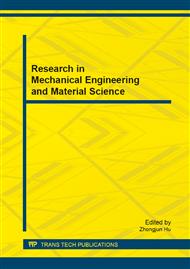p.620
p.624
p.627
p.631
p.636
p.640
p.644
p.648
p.652
Research on Appointing Diversified Subjects for Evaluating Performances of Energy-Saving and Emission-Reducing of Local Party and Government Leaders
Abstract:
This paper analyzes the necessity of appointing diversified subjects for evaluating performances of energy-saving and emission-reducing of local Party and government leaders, provides some thoughts about appointing diversified subjects for evaluating energy-saving and emission-reducing of local Party and government leaders, enhancing the publics consciousness of attending evaluation of energy-saving and emission-reducing of the leaders, establishing 360 degree structure of evaluation subjects of the performances of leaders, setting weight of diversified evaluation subjects, completing systematic guarantee system for attendance of diversified subjects, enhancing trainings of diversified evaluating subjects, improving performance information system, cultivating evaluation culture of attendance of diversified subjects, etc.
Info:
Periodical:
Pages:
636-639
Citation:
Online since:
October 2013
Authors:
Price:
Сopyright:
© 2014 Trans Tech Publications Ltd. All Rights Reserved
Share:
Citation:


